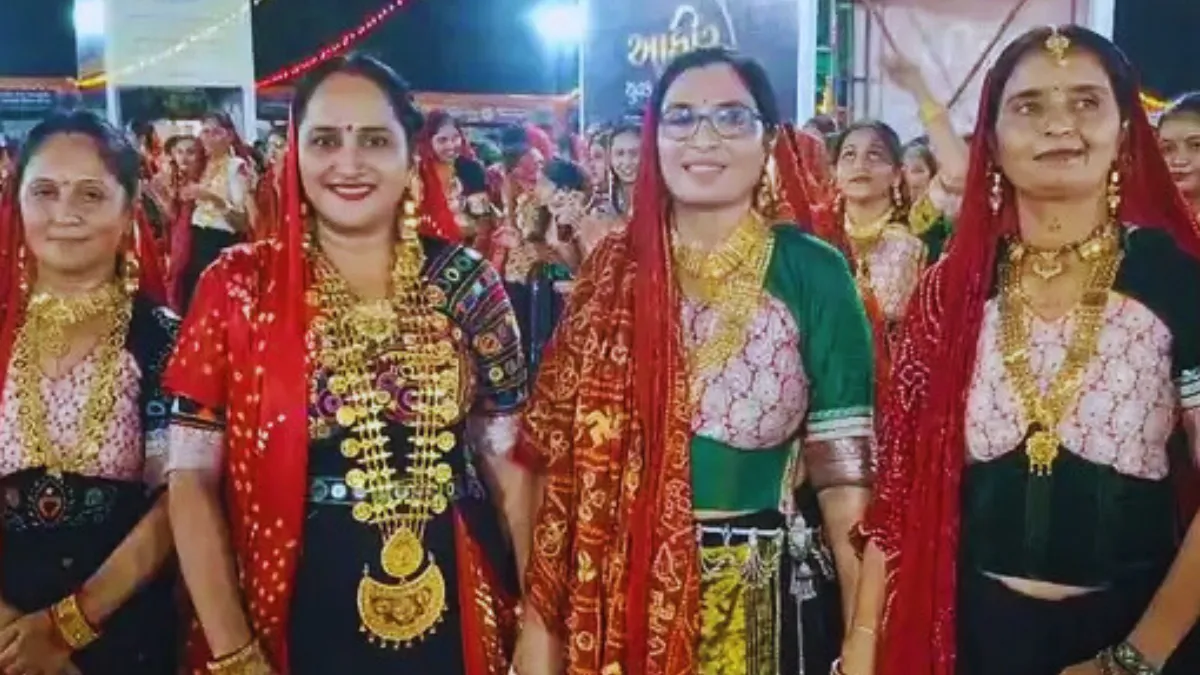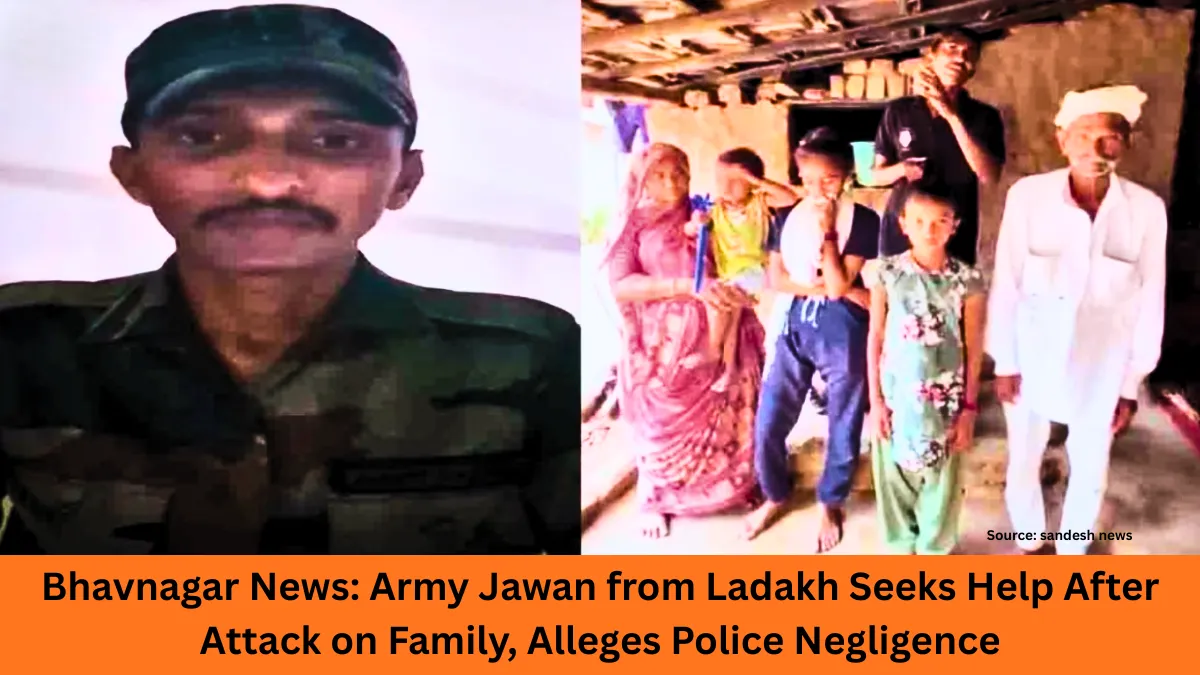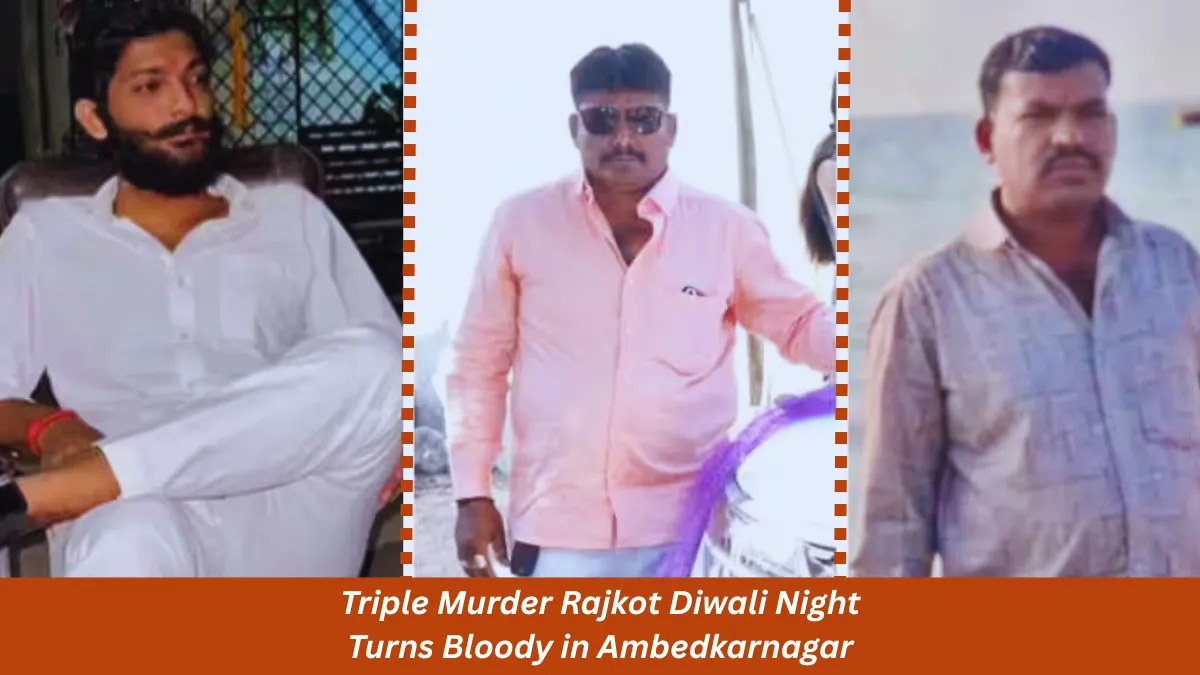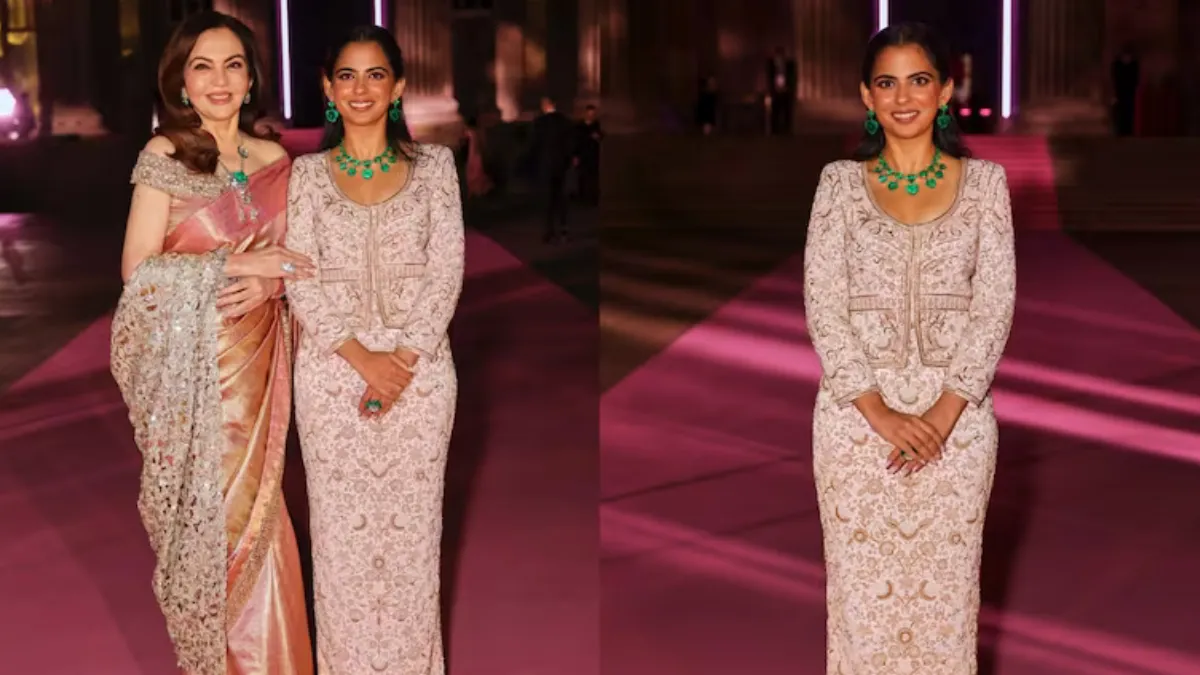Golden Garba has once again illuminated Junagadh during this Navratri season, where tradition, devotion, and cultural pride came together in a spectacular celebration. The city witnessed a breathtaking Rasotsav (festival of Raas-Garba) organized by the Ahir Yuva Manch, where thousands of participants showcased their heritage with unmatched grace and grandeur. The highlight of the event was the participation of over 4,000 Ahirani women, adorned head to toe in traditional golden jewelry, who performed the age-old Garba with devotion, bringing alive the spiritual and cultural essence of Gujarat.
This remarkable Rasotsav was not just about dance—it was a living museum of faith, art, heritage, and tradition. The sight of thousands of women dressed in authentic attire, glittering in gold ornaments worth crores of rupees, created an unforgettable aura that truly defined the essence of Golden Garba.
A Tradition of 17 Years Strong
The Ahir Yuva Manch of Junagadh has been organizing the Navratri festival for 17 consecutive years, with only one pause during the pandemic period. This uninterrupted dedication shows how strongly the community is committed to preserving its cultural roots. Every year, thousands of Ahir brothers and sisters gather to celebrate Navratri in the most traditional way possible.
This year, on the fifth Navratri night, more than 8,000 participants came together to perform Raas. The grandeur of this gathering was reminiscent of the legendary Maharas of Dwarka, where Lord Krishna himself is believed to have danced with the Gopis.
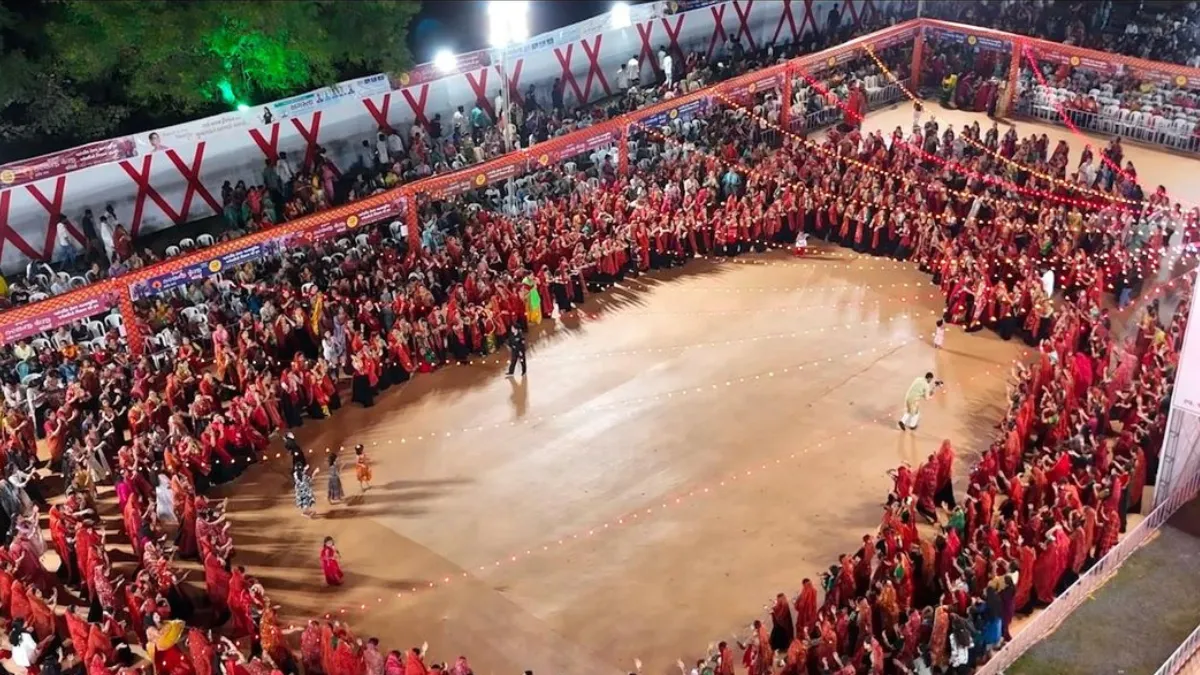
Golden Glow: Women Adorned in Traditional Jewelry
The true centerpiece of the event was the participation of over 4,000 Ahirani women, who came dressed in elaborate traditional attire and adorned in jewelry from head to toe.
- Head and Forehead: Women wore bor (forehead ornaments) and damdi (traditional headpiece), making their faces glow with cultural beauty.
- Neck and Chest: Heavy necklaces such as Hansdi, strings of beads (Pot), and intricate ornaments added a majestic look. Some necklaces stretched till the waist, making the entire ground sparkle in gold.
- Ears and Arms: The women decorated their ears with Vedhla (ear ornaments) and heavy tops, while arms shone with Bavthiya (armlets) and Baju Bandh (arm cuffs).
- Wrists and Waist: Heavy golden Kadas (bangles) and silver waistbands (Kandora) jingled with every movement of the dance.
- Feet: Anklets with Ghungroos (tiny bells) produced rhythmic sounds, making the Raas even more divine.
The sight of thousands of women dancing in perfect synchrony, covered with dazzling ornaments, created an atmosphere where devotion met luxury, and culture blended seamlessly with spirituality. It was indeed a true Golden Garba.
Dress Code Preserves Cultural Identity
To preserve the age-old traditions, the organizers made it mandatory for participants to wear traditional attire for two days during Navratri.
- Men dressed in Chorni and Peharan (traditional outfits).
- Women wore Kapadu and Odhani (traditional draped garments) along with golden ornaments.
This dress code was not just about appearance; it was about keeping the Ahir identity alive through authentic cultural expressions. Unlike modern Garba events that often blend western styles, Junagadh’s Golden Garba stood out as a festival deeply rooted in tradition.
The Melodious Sound of Ornaments
As the Ahirani women danced in circles, the sounds of their jewelry—ghungroos, kadas, and jhanjars—filled the air with divine rhythm. The jingling created an almost spiritual backdrop, making the Rasotsav feel like a direct offering to Goddess Durga. Many attendees described the atmosphere as “Gokul-like,” reminding them of the time when Lord Krishna himself danced in Vrindavan.
Spiritual Devotion Through Dance
For the participants, the Golden Garba was not merely a dance but a spiritual experience. Ahirani woman Mansi Ram expressed her feelings by saying,
“When we dance in our traditional attire during Navratri, it feels like Lord Krishna himself is with us. Every step of Garba is a prayer, and every twirl is devotion.”
Another participant, Hitakshi Dangar, shared,
“The joy of dancing in traditional costumes and jewelry is unmatched. This is not about show or glamour; this is about living our heritage. Only old and traditional Garba songs are played here, which keeps the atmosphere pure and devotional.”
No Place for Disco Dandiya
In an era when modern Navratri celebrations often include Bollywood beats and disco dandiya, the Ahir Yuva Manch has firmly kept its Rasotsav free from such influences. Only age-old Garba and Ras songs dedicated to Goddess Durga are performed here. This dedication ensures that the sanctity of Navratri remains intact.
The organizers have also made separate arrangements for men and women’s grounds, ensuring both safety and comfort for the 8,000 to 10,000 attendees.
Why Golden Garba Stands Out
- Cultural Authenticity: Every element—from the jewelry to the attire to the songs—is traditional.
- Mass Participation: Thousands of people come together, making it one of the largest community Rasotsavs in Gujarat.
- Spiritual Atmosphere: The Ras is not just entertainment but an offering of devotion.
- Heritage Display: The jewelry and attire showcase the centuries-old craftsmanship and culture of the Ahir community.
- Unity and Identity: The festival strengthens the identity of the Ahir community while welcoming outsiders to witness its glory.
Symbolism of Golden Garba
The Golden Garba of Junagadh is not about wealth alone. The gold ornaments symbolize purity, prosperity, and devotion. By wearing traditional jewelry, the Ahirani women keep alive the customs passed down by their ancestors. Every necklace, bangle, and anklet carries with it stories of heritage, and when thousands dance together, those stories come alive in a grand celebration of faith.
Also read: Rajkot Barauni Special Weekly Train to Run During Diwali and Chhath Festival Season
A Celebration Beyond Dance
The Rasotsav is also a platform where generations come together—elders pass on traditions, youths embrace their roots, and children learn the values of devotion and culture. It is not just about worshipping the Goddess during Navratri but about preserving a cultural identity that is thousands of years old.
For visitors and onlookers, witnessing the Golden Garba is like stepping into a living heritage museum, where every move of the dancers narrates a story of Gujarat’s glorious traditions.
Also read: Saurashtra University Unveils Unique 7 Crore Circular Library with 24-Hour Student Access
Conclusion: Golden Garba as a Cultural Jewel of Gujarat
The Golden Garba of Junagadh has once again proven why it is more than just a festival—it is a celebration of heritage, devotion, and unity. With thousands of Ahirani women dancing in golden ornaments, the city turned into a glowing canvas of culture and faith.
In times when modernity often overshadows traditions, the Ahir Yuva Manch’s commitment to keeping Navratri pure and authentic is commendable. The grand Rasotsav not only strengthens community bonds but also showcases Gujarat’s timeless culture to the world.
As the jingling anklets and golden necklaces created divine music under the starlit sky, Junagadh’s Golden Garba stood tall as a reminder that true celebration lies in faith, tradition, and unity.
